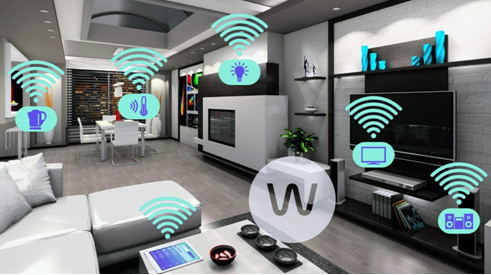Connecting Humans: The Future of Interior Design
The importance of sustainability in interior design ?
Interior design aims to achieve a certain functionality, aesthetics and experience. In this process a lot of materials, electronics are utilized. Consumption of energy is a key element in any design, especially in the way services are managed
Sustainability is all about reduce, reuse and recycle. In light of the growing climate concerns, corporates are laying greater emphasis on sustainability. Hence the Designers have a role in sustainability.
Every Design involves the choice of material, energy and space. All Materials come with a certain carbon footprint. However judicious use of wood and recyclable material will have lesser impact on the environment. Lighting technology, automation and air conditioning are three major areas for conservation of energy consumption.
Adaptive reuse in commercial architecture. How is it done ?
In many instances, the expense of rehabilitating and restoring a building or space for adaptive reuse is greater than the cost of demolishing it and building new. However, the decision to repurpose this building for adaptive reuse often wins out over less costly demolition and rebuilding for the following reasons:
- MaterialsMany older buildings were built using durable old brick, sturdy first-growth lumber and other pure, natural materials. Today’s popular construction materials like vinyl, fabricated sheeting and plasterboard cannot compare in quality and durability. Building materials that are over-processed using the lowest-cost methods and procedures available will not have the strength to withstand long-term use in repurposed building structures.
- SustainabilityThe entire process and enactment of adaptive reuse of architecture is inherently green in concept, materials and practice. The necessary building supplies are already produced and present on the building repurposing site. Since in many older buildings, much of the original structure can be reused for completing the repurposed structure, sustainability exists throughout all stages of the building’s rehab.
- CultureArchitecture depicts and embodies history and memories. All areas and aspects of an existing architectural structure that can be preserved for adaptive reuse are contributing to the cohesive continuity of a valuable entity representing an essential culture.
Modern architectural designs: adapting to the current regulations ?
Adapting to regulations is not a choice but a need and a necessary condition for design. All I want to say is that there must be transparency, simplicity and reduction in unfair and illegal practices.
How does design shape your work as an artist ?
Equating art with design often leads to some strong opinions like:
-
- “Design is not art. Design has to function.” “Art is meant to provoke thought and emotions, but it doesn’t solve problems.” “Artists primarily work off instinct, whereas designers employ a methodical, data-driven process.”
-
- Unfortunately, the designer vs. artist discussion often deteriorates into ranting and raving. Lines are drawn, battle flags are raised, and productive dialogue becomes impossible. Design needs to fulfill a function. Not art.
- Design is a process. But Both are interlinked, art provides a relief in design. A direction to design. Both are complimentary. Without art, design will be so boring. When it comes to a built environment without design, art will be directionless. So both have their own space.
How does artificial intelligence affect interior design ?
Although interior design isn’t the first thing that comes to our mind when we consider the use of AI, it just has as much potential for growth with technological integration as any other industry.
The introduction of AI in the field of interior designing seems to point towards creating a synergy between the client and the designer by linking the client’s ideas and designer’s visualization. It is bridging the gap between the client and the professional. The process involves collecting data from the client regarding their choice and then connecting them to like-minded interior designers for better guidance.
AI can assist design teams by enhancing and reducing overall lead times, and expand their creative discovery by analyzing and remembering insights from thousands of images and videos using computer vision. These designers can also more easily find how they can integrate trending colours, key patterns, and styles.
Connecting with humans is the real future of interior design. Taking the time to see your client, to understand your client and to be an advocate for your client is not something that AI can do. That is something only a designer can do. Hence AI cannot replace Interior Designers but it can surely be a helping hand for the industry.
Designing with safety as a priority
Architects and Designers have a critical role in the safety of the users who will occupy and spend most of their lives in these premises. It is their duty to:
- Ensure foreseeable design risks are eliminated or reduced through the design plan.
- Ensure collective protective measures are taken to manage any residual design risks.
- Ensure all relevant information on design, construction and maintenance are available to stakeholders.
Safety as an afterthought is not only weak but also expensive at times. So, it has to be built in every layer of the architecture. Right from the time a user enters a building to the time he exits.
How can IOT change the face of home Interiors ?

There are billions of connected things living in the built environment world, and as many as 2/3rd of those cater to homes rather than businesses. While interior design and technology are concepts that are still fairly new, the onset of smart home devices is leading more cutting edge interior designers to incorporate smart tech when designing interiors for residential spaces. Even as more companies continue to market new IoT products, what really lures homeowners to request for smart homes is the promise of new features such as increased comfort, energy savings and home automation.

Is there a common thread in designing spaces for different industry segments like healthcare, pharma, shipping, retail commercial office space etc. ?
If we look at the workspace for organizations, the design trend has been evolving at a very fast pace. The different sectors may have slightly different functional requirements. Back office vs customer facing. If there is a research orientation in Pharma Vs shipping may be logistical requirements in shipping. However, the common trends across the sector are the following:
- Sustainable office design.
- Flexible working.
- Wellbeing and human-centric design
- Technology and smart offices
- Connectivity and community
What has influenced you the most as a designer and professional ?
I am driven by my desire to combine creativity with practicality and problem solving. At the end of the day my purpose is to solve problems for humans and create possibilities for the future. Designs are customized hence the user lies at the center of the design thinking. I was never an artist by birth but the desire to solve complex problems led me to this field.
What would be your advice to industry in terms of what they should expect and demand from architects and interior designers while designing spaces ?
The foremost is to be clear about the requirements by factoring the top stakeholders. Help discover and communicate the key problems to the architects and designers. And do treat them with the same professional respect that you will do with your doctors, take expert advice and allow the necessary freedom. And remember, there are no free lunches.
Likewise, what would your expectations be from the industry ?
First, before you look for ideas around the world, look within the talent pool in the country and engage the local architects and designers who understand the sensitivity and problems of India. Many of those have travelled across the globe and hold a good understanding of global trends as well.
The Make in India thought process must also drive greater opportunities to the local pool of talent both in design and the construction sector. If the local industry can design and build the world’s tallest statues, why can’t they create iconic buildings and spaces.
Your advice to budding and young professionals.
- Feel Lucky! Not arrogantTo start with, know that you are in a field that has greatly impacted, and sometimes literally created, the greatest civilizations throughout history.
- Grow a Thicker Skin! Embrace failuresNow that you are all happy about being in one of the most revered fields, maintain this happiness through the difficulties you will face. Always remain optimistic!
It can be greatly depressing when you work on a project through days and nights but it receives little or no appreciation. - Leave Your Comfort Zone! Keep unlearning and LearningNever be afraid to try new things, even if it entails learning something complicated from scratch in a limited time. You can achieve it if you have the will.
- Don’t be Stubborn! Listen to the user carefully. EmpathiseBelieve in your ideas, but be open to critique!
- Be Social! Ask a lot of questionsIf you want to be a leader, this is the trait you need to have. Expand your network as far and wide as possible. Make connections around you and through social networking sites. Be easy-going and approachable with people and don’t even pretend to forget any of them.

